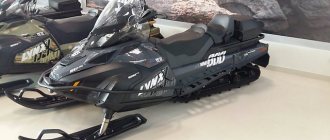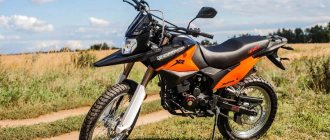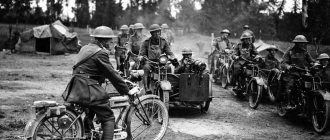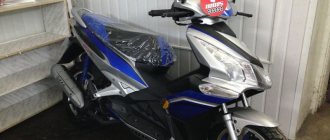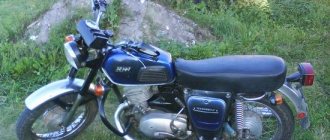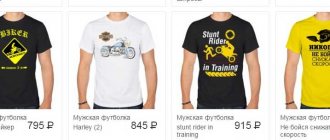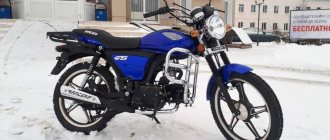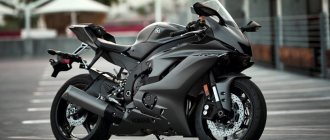The history of the use of motorcycles by police goes back more than a hundred years. The first police motorcycle was purchased for the needs of the New York Police Department back in 1907, and two-wheeled vehicles began to be used as official motorcycle patrol in California in 1911. Since then, motorcycle technology has repeatedly proven its advantages in the fight against crime in general and, as an option, is widely used for prompt response to road accidents.
In addition to efficiency, maneuverability and compactness are also undoubted advantages in the use of these two-wheeled vehicles by the police. And lower fuel consumption compared to cars will also allow you to save money. The only drawback of such patrols in Russia is the seasonality of their use. You can't ride a motorcycle in the cold. Although in countries with hot climates the possibility of using such technology remains all year round.
Popular brands of police motorcycles
Many motorcycle companies created special police cars that were very popular at the time, for example, Indian from the beginning of the 20th century to 1953 or Kawasaki from 1975 to 2005. But for various reasons, they could not withstand the competition in this niche and left the race. The most well-known brands of police motorcycles around the world today are BMW, Harley-Davidson, Honda and Yamaha. Road, tourist and sports varieties of motorbikes are used for police service.
Harley-Davidson
The motorcycle was first put at the disposal of the police in America and continues to serve them faithfully to this day. The company's history has had its ups and downs, but today, just like in the 1920s, 3,800 police departments in the United States ride Harley-Davidson on street patrol. In addition, the police of another 45 countries order motorcycles of this brand for road patrols and other needs. By comparison, in the 1980s, only 400 police departments in America rode Harley-Davidsons.
Today, the American manufacturer offers three modern models for police services: Harley-Davidson FLHTP Electra Glide, Harley-Davidson FLHP Road King and Harley-Davidson XL 883L Sportster. The first two bikes belong to the Touring line of models and are heavy cruisers designed for long trips, making them simply ideal for patrolling the streets. The XL 883L is more of a classic motorcycle than a cruiser, and can therefore be used for a variety of purposes.
The Electra Glide and Road King boast a six-speed transmission. For all three models, an anti-lock braking system (ABS) is available, the use of which increases driving safety.
BMW
BMW police motorcycles are perhaps the most popular in the world. The manufacturer claims that its motorcycle equipment for law enforcement agencies is supplied to 150 countries around the world and the total fleet of two-wheeled vehicles of the brand performing police functions has long exceeded 100,000 units. BMW Motorrad's products currently include the R1200RT-P and R900RT-P special police motorcycles. These motorbikes are lighter, have better handling, and the braking system is softer than that of Harley-Davidson.
The R1200RT-P is based on the standard 1170cc version. cm, however, with the addition of stainless steel safety bars. The R900RT-P has a smaller 878cc engine. cm and is not available in a civilian version.
Honda
The most widely popular police motorcycle is the Honda ST1300PA. Police forces in the UK and USA use motorbikes. Powerful, secretive, fast and reliable - this is how one of the best Japanese cruisers can be described. Japanese cars are more accessible and cheaper than their American counterparts and are equipped with standard police equipment. Japanese law enforcement officers also ride these same motorcycles.
Yamaha
The FJR1300 model is used to equip police motorcycle units in different countries. Following doubts about the safety of the Honda ST1300PA, which arose as a result of an accident with a British police officer, the British police began to purchase the Yamaha FJR1300. Police on motorcycles of this brand go on patrol in countries such as France, Belgium, the Netherlands, Australia, and Denmark.
A distinctive feature of the model is the diagonal aluminum frame. The 1.3-liter four-cylinder engine is equipped with a modern electronic D-Mode system for three power modes, has an adjustable YCC-T throttle and an exhaust control valve. The presence of a driveshaft instead of a chain drive and massive fairings also make the car stand out.
BMW Motorrad R 1250 RT—P; F 850 and F 750 GS—P
A decade ago, BMW claimed to be the largest seller of utility motorcycles, with 100,000 of its motorcycles in service in more than 150 countries. Today the brand is still very common in law enforcement, with some of the most popular motorcycles in police fleets around the world being the BMW R 1200 RT-P and the updated R 1250 RT-P. The newer model adds displacement and the option of electronic suspension adjustment to the standard anti-lock system, traction control, ride modes and heated steering wheel grips from its predecessor.
Like the standard model, the 1250 RT-P comes with 1254 cc and 136 hp. With. flat motor and boasts all sorts of options for weapon racks, radar/lidar equipment and more. The blue motorcycles also have a full hazard lighting system, including hazard lights, a handlebar switch system and power management for optional equipment. The R 1200 RT-P was featured in the 2017 California Highway Patrol film reboot (you can watch a video of that model here), and the various versions of the RT and F 750 and F 850 GS-P provide stable performance in America, the UK, Germany, Slovenia, Scandinavia... and so on.
Police motorcycles in the Russian Federation
Motorcycles have been used by law enforcement agencies in the Russian Federation since Soviet times. In the 30–50s it was a Harley-Davidson 1200 with a sidecar; after the war it was replaced by the WLA 42 model of the same manufacturer. At the same time, the domestic army Ural M-72 was used, since the mid-60s it was replaced by the lighter and more maneuverable M-62, which was produced at the Irbit plant and was more suitable for police work.
At the end of the 60s, a small special series of Ural M-100 motorcycles with a sidecar and in a single version were developed for the Soviet law enforcement system. These were already real police bikes with special equipment installed on them. Production of this motorcycle for the police lasted from 1969 to 1994. The cars were produced in blue and yellow colors and were specially equipped with a siren, devices for installing traffic police devices, safety bars, and warning lights.
In the 70s, the police began to transfer to cars. The replacement of the motorized transport fleet primarily took place in large cities, but in remote regional departments it was possible to meet a district police officer on a motorcycle with a sidecar even in the 90s of the last century.
Currently, Russian police also use motorcycles. The first motorized police battalion (3rd specialized traffic police battalion) was created in Moscow. In 2011, it was equipped with BMW F 650 GS motorcycles, called “geese” by Russian bikers. In 2014, the fleet of this police unit was replenished with 60 brand new BMW R 1200 RT in a special police version.
Motorized vehicles in the Russian police are used in traffic police units for prompt arrival at the scene of a traffic accident in conditions of heavy congestion during rush hour in large cities, for patrolling in the warm season at night and in the evening to combat biker violators, for preventive working with motorcyclists.
Russian police motorcycles are painted white with additional blue stickers, equipped with a walkie-talkie, flashing lights, and an audible alarm. Increasingly, traffic police officers in large cities can be found riding specially equipped police motorcycles. To prevent, prevent and record offenses on the roads, mainly motorcycles from the German company BMW are purchased in a special police version of the R 1200 RT. The car has excellent handling. The boxer power unit creates good traction. Stability control system, active suspension adjustment, cruise control, gear shift assistant - this is not a complete list of the electronic systems of this motorcycle. The ride on it will be comfortable and confident on any road.
Honda ST1300PA, ST1100, Africa Twin
The popular ST1100 Pan European is still widely used around the world, but these days the ST1300PA does most of the heavy lifting for Honda guys (and girls) in blue with a compact 1261cc V-4 engine. cm, longitudinally mounted transmission for maximum efficiency, low center of gravity for ease of low speed operation, dedicated steering wheel, patrol speedometer and mounting brackets.
A remote preload adjuster makes it easy to change suspension settings, and the seat is adjustable in three positions; Lockable integral luggage compartments hold 35 liters each, while a special rear fairing and rack provide additional load capacity.
Anti-lock brakes, an engine-powered adjustable windshield, and a two-piece 7.7-gallon fuel tank round out the list of desirable features. This is the standard option for Malaysia and neighboring countries.
Of course, you'll see the ST1100 still in use in places like Scotland and Western Australia, while the VFR800P is issued to the Japanese police, most often for training purposes. We've even seen CBX750s used in Gibraltar and Uzbekistan, as well as CBX500s and even Gold Wings repurposed for road duty.
What will the police motorcycle look like in the future?
And in conclusion, a few words about the direction of development of two-wheeled motorcycle transport for police services. The Zero MMX electric motorcycle was created for military purposes, but the advantages of this prototype can also be used for police purposes. The main quality of such a machine is noiselessness. Its environmental friendliness is also not in last place here, because it is public services that must set an example of caring for the environment. Simplicity of design and ease of repair will also be obvious advantages. The motorcycle does not need to be charged; the batteries are easily replaced.
Electric motorcycles are already being tested by the Los Angeles Police Department and are showing good results in their use. What do you think about this direction of development of police motorbikes, such as electrification? Will electric drives be able to completely replace internal combustion engines in police motorcycles?
Kawasaki KZ1000P, Concours 14P
Before the motorcycles that made Ponch and John famous were discontinued in 2005, the P-Series police models offered run-flat tires, side racks, a distinctive fiberglass fairing with windshield, folding running boards and a larger system charging than regular civilian bikes.
Then came the four-cylinder Concours 14 (1400GTR) in 2009, and after receiving high marks in tests in Michigan, it attracted the attention of various police departments. The base 1400GTR was well suited for police work, with a 1352cc in-line four engine. cm, which offered 153 hp. and 100 N/m of torque at 6,200 rpm, and a claimed top speed of over 170 mph (depending on version). The police models were not directly manufactured by Kawasaki, but they were modified by dedicated designers.
Alas, Kawasaki exited the police vehicle market in 2012 (at least in the US) after a series of power failures at the Concours. However, we have seen many other modified Kawasakis used around the world for police duties, most notably the Versys and Ninja 650.
Where do they go here?
In addition to the trips to work and on business that I have already mentioned, most often motorcyclists go for rides outside the city. Moreover, on roads of second and third importance - narrow, winding, deserted. There are no traffic lights, there are no holes and manholes, there you can calmly allow yourself to relax and look around.
Do you know how cool it is to fly as a bird along roads like the ones in the pictures below? (filmed in the Dallas area) Feel the wind with your whole body, inhale the smells?
They ride outside the city both individually and in groups. Most often, a group consists of 5-15 people, not counting motorcycle rides that attract thousands of motorcyclists (but I’ve only seen one like this so far)
For avid computer geeks like me, there are special sites on the Internet, groups on social networks (Facebook, Meetup, and others), where motorcyclists agree on joint rides. A route is being developed for 2-5 hours of driving, in most cases with a stop for breakfast or lunch in some strange restaurant in a tiny godforsaken town. Simple, hearty, almost home-cooked cuisine from small country taverns (MEAT!) - what could be better to relax after a long time in the saddle?
Sport
Designed for high speeds, rapid acceleration and heavy braking on paved roads. At the expense of comfort and fuel economy. It has an aggressive, recumbent riding position. Legs are pressed to the body. Much attention is paid to aerodynamics. Typically, plastic fairings completely cover the motorcycle. Sports bikes have a powerful engine, excellent brakes and a lightweight frame. The front and rear wheels are larger and wider than on other types of motorcycles. Speed and fast acceleration make them popular among thrill-seekers.
I see quite a lot of sports motorcycles on the streets. Especially among urban male youth. In the city, people most often travel to or from work with a backpack on their back. On country roads they quite often overtake me and rush off into the blue distance.
We must still give credit - most riders of sports motorcycles are dressed according to the ATT-ATG rule. That is, in a closed helmet, jacket, high boots, gloves, etc.
Unfortunately, “sport” drivers are the most aggressive of all “types” of motorcyclists. Of course, we shouldn’t speak for everyone, but it is precisely because of the behavior of sport bikers on the road that there is dislike for motorcyclists among ordinary drivers.
Community
In most cases, motorcyclists on the road greet each other by showing two fingers with their left hand, or at least nodding their helmeted heads to each other.
I will soon write a separate article about how I learned to drive a motorcycle and received my license. For now, I’ll just tell you that every time I stop somewhere on the side of the road, within a few minutes another motorcyclist will definitely stop and ask if I’m okay and if I need help.
And one day they actually saved me. My clutch cable broke and, with the engine stalling, I drove to the nearest turn and stood there under a bush. I didn’t vote, I didn’t show any outward signs that I needed help - but it came, quickly and inevitably. No, not from a motorcyclist. Literally three minutes later, a pickup truck turned towards me, a young guy got out of it, and immediately began to examine my breakdown. Thanks to his set of tools, I was able to somehow tighten the clutch cable in the handle with a nut and get it to work. So he accompanied me for about 15 minutes all the way to the house, rode behind me and insured me. Completely selfless. He gave a farewell horn, waved his hand, and was off. I was very impressed by this episode.
I’ll wrap it up here, if you have any questions, I’ll be happy to answer!
What is “Chopper”
To be honest, before, when I didn’t understand motorcycles at all, I thought that any American “cruiser” was a “chopper”. They were often called that in films, and I also had some kind of childhood association with the “chop-chop-chop” sound made by heavy cruisers. I was surprised to learn that I had been wrong for so long.
In fact, chopper comes from the word “chop” in the sense of “chopping off”. This is a motorcycle with parts cut off. A semi-disassembled or assembled motorcycle from available parts. Homemade, alteration, project.
According to this definition, choppers have no distinctive features - they can look whatever their creator pleases. But the most famous modifications are: an incredibly large front fork offset, a tall steering wheel, modified geometry of the tank and exhaust pipes, all sorts of dangerous-looking pieces of hardware welded here and there. Sometimes in the form of skulls, sometimes in the form of flames. And, of course - most often - eye-catching coloring!
Which motorcycle is the easiest to convert? Yes, one that is as simple as two pennies, which can be repaired with a hammer and a welding machine - that’s why the vast majority of classic American cruisers become choppers.
There are choppers on the roads, but not very often. In general, they don’t drive them - they are kept in garages, they show off about them, half-naked girls are photographed with them. Well, maybe they can go for a ride back and forth on a Sunday, just for fun. But not every day to work.
Yamaha FJR1300P, XJ900P, XJ600P, XV250P
The newest American police motorcycle is made by Yamaha, which entered the US police motorcycle market in 2018, filling the hole left by Kawasaki with the single-row FJR1300P. The FJR1300P is the police version of the standard FJR1300 and has many of the same features, except for the electronically adjustable suspension. The motorcycle is powered by a 1298 cc DOHC inline four-cylinder engine. cm with 16 valves and a six-speed gearbox to transfer power using a multi-plate clutch. The lightweight liquid-cooled engine produces 145 hp. at 8000 rpm and 102 Nm of torque at 7000 rpm and the motorcycle comes with a 6.6 gallon fuel tank and LED lighting along with anti-lock braking system, traction control, cruise control and engine performance map. For added comfort, the FJR1300P features a height-adjustable seat and handlebars, and an electronically adjustable windshield. Other features include wind deflectors, engine guards and a rear-mounted radio; Police lighting can be ordered through a reseller and added at the factory. This bike is widely used in Europe, including Germany, UK and France.
Yamaha also offers a wide range of other two-wheelers on its website, including the XJ900P, MT09TR and XJ6SAP. There is even a 250cc version of the Virago with a carbureted, air-cooled XV250P.
Source
How can we reduce the growth of unwanted migrants?
Recently, one can observe strange cases related to the inappropriate behavior of visitors to our country. Some commit crimes with impunity. Our society rightly reacts to such attacks with great indignation. Nobody likes it when people do nasty things in their home. Sometimes it’s hard to calm down relatives, and the attitude towards strangers is much more wary.
People simply get tired of this. But any manifestations of indignation are interpreted as infringement of people on ethnic grounds, oppression, and sometimes even expose the well-known Article 282 of the Criminal Code of the Russian Federation, which most often applies specifically to the indigenous population.
There are many such cases that can be cited. But there are also more negative trends, when guests begin to feel like masters and express open ignorance towards the inhabitants of the country they are visiting. This is not to mention the diasporas, which have great influence, help their compatriots avoid punishment and merge with government officials.
Recently, a similar thing happened in the capital of our country. One citizen, who came from a former Soviet republic (and now a sovereign state), and is sort of a blogger, staged a performance almost in the very heart of the country.
He posted a photo of himself simulating obscenities with a girl dressed in a police uniform. All this is demonstratively captured against the background of the temple. A corresponding reaction from society and law enforcement agencies followed very quickly.
By his action, the blogger expressed his disdain for Russian culture, the Orthodox faith, and local girls, who have long been perceived by such characters as “meat.” This is not to mention the demonstrative attitude towards law enforcement agencies. You can read a hint that such guests do not care about the security forces and what the guests do “morally” with any attempts to stop the unworthy behavior of guests in our country.
Soon, the blogger was detained and a case was opened for an administrative offense under Article 19.3 of the Code of Administrative Offenses of the Russian Federation (Disobedience to a lawful order of a police officer) and 18.8 of the Code of Administrative Offenses (violation by a foreign citizen of the rules of entry into Russia or the regime of stay). The blogger was fined 5 thousand rubles and sentenced to 10 days of administrative arrest. Plans are reported to deport the guest outside our country.
But they decided not to end this story. So that life does not seem like honey, for this
a citizen was charged with insulting the feelings of believers (Part 1 of Article 148 of the Criminal Code of the Russian Federation). Despite. that there are certain questions about the article itself, but it is in this case that there is a sense of justice. It is difficult to imagine such actions of a blogger against the backdrop of religious sites of other faiths.
Such demonstrative disregard for our country and culture suggests that the kids are playing too hard. and if low-ranking representatives of newcomers limit themselves to everyday crimes and boorish behavior towards the local population, then elite immigrants openly show their disdain.
Something needs to be done about such phenomena. It is wrong to openly fight against migrants themselves, since among them there are a sufficient number of worthy people who should not be affected by the measures taken.
One retired police colonel, previously involved in the fight against extremism, expressed in his blog a good idea that has the right to life and implementation. These proposals contain grains of common sense, not devoid of common sense.
The Colonel proposes to provide for “collective” liability through surety. Let’s say there is a citizen who wants to come to work or even become a citizen of our country. There is nothing wrong with such aspirations, as long as you do not plan to violate our laws.
But a mandatory condition for entry from countries at risk must be a guarantee of the migrant’s proper behavior in our country from his compatriots. You need to get it from 3-5 people who are already citizens here.
If a citizen commits offenses, crimes or other indecent acts, then he and his guarantors go home to remember what it’s like to wag the tails of domestic animals.
Considering the close family and clan ties in these countries, in the future this will become an internal showdown in which they will find out the reasons why someone lost their earnings in our country and who is to blame for this.
If this practice becomes established, then “national radio” will work very quickly. Firstly, they will stop vouching for just anyone, and secondly, citizens will try to behave culturally in the host country, as they will realize the weight of the problems that will await them in their homeland due to unworthy behavior in the host country.
Someone might yell that we shouldn’t do this or that we should treat guests hospitably. Yes, guests should be treated well. But exactly until they begin to harm, damage property, or even behave like owners. There are enough problems of our own, you know.
So such ideas are quite good. And they can become an effective tool for controlling unwanted migration. This issue needs to be addressed before it is too late.
Moto Guzzi California 1400 ABS, Norge 1300 ABS
The California 1400 was completely redesigned for the 2014 model year and performed well enough in testing in Michigan in 2013 that parent company Piaggio decided to reintroduce it to US law enforcement. According to a Moto Guzzi spokesman, they also made the Norge faster, allowing it to compete in the road patrol segment: “The Norge is better suited for highway patrol applications where they have to drive at high speeds.” We cannot confirm whether any US police agencies currently use Guzzis, but they are used by police departments in Europe and the Middle East.

